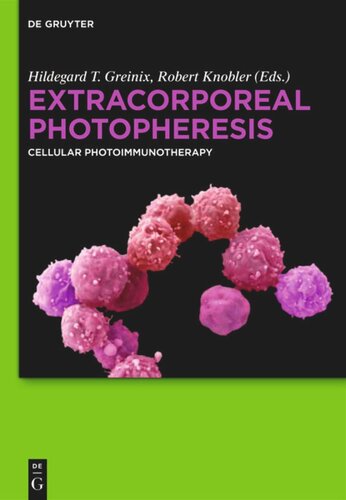

Most ebook files are in PDF format, so you can easily read them using various software such as Foxit Reader or directly on the Google Chrome browser.
Some ebook files are released by publishers in other formats such as .awz, .mobi, .epub, .fb2, etc. You may need to install specific software to read these formats on mobile/PC, such as Calibre.
Please read the tutorial at this link: https://ebookbell.com/faq
We offer FREE conversion to the popular formats you request; however, this may take some time. Therefore, right after payment, please email us, and we will try to provide the service as quickly as possible.
For some exceptional file formats or broken links (if any), please refrain from opening any disputes. Instead, email us first, and we will try to assist within a maximum of 6 hours.
EbookBell Team

0.0
0 reviews Extracorporeal photopheresis (ECP) is the first FDA approved cellular photoimmunotherapy for cancer, namely cutaneous T-cell lymphoma, and has demonstrated efficacy in various diseases that have a suspected involvement of pathogenic T-cells including prevention and treatment of acute and chronic graft-versus-host disease, organ transplant rejection, selected autoimmune diseases and Sezary syndrome. In ECP, patient’s blood mononuclear cells are collected, exposed to ultraviolet light in the presence of extracorporeally administered liquid 8-methoxypsoralen and reinfused. Besides its considerable efficacy ECP has an exceptional safety profile, does not cause general immunosuppression and thus, does not increase risk of infectious complications and relapse of malignant disease. Exciting preclinical data and clinical observations provide insight into the mechanisms of action of ECP and support its immunomodulatory role. This book will provide an overview on the historical development of ECP, technical aspects for its use in various patient populations including children and adults, novel research findings both in preclinical models and in various patient cohorts and will stimulate further research in organ, tissue and cell transplantation and autoimmune disorders.
Mechanism of action of extracorporeal photopheresis
Indications for use of extracorporeal photopheresis
Treatment results